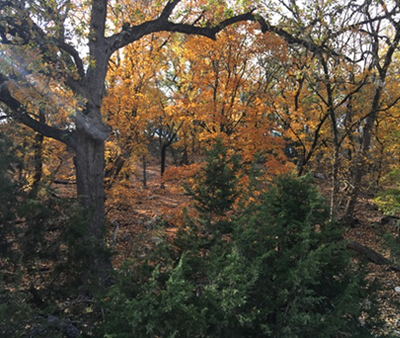Populations
Three main factors caused changes in North American plant communities over the last 20,000 years, including: 1) warming temperatures and glacial retreat, 2) Native Americans, and 3) the appearance of Europeans and their animals. Based on evidence, seed production, germination, and seedling recruitment was not a problem prior to European settlement in North America.
- The structure of relic bigtooth maple populations were compared to adjacent J. ashei populations.
- The overstory, understory density, and basal area was determined for both communities using the quadrat procedure.
- There were no bigtooth overstory or understory plants in the hilltop mountain cedar or Juniperus communities.
- Bigtooth maple had an inverse quadratic size distribution with few juveniles.
- There was little or no recruitment of bigtooth maple in the previous 20 years.
- Mountain cedar had many understory plants and considerable recruitment.
- One bigtooth maple established in the 1670s, two in the 1760s, and most in the 1970s.
- Causes of the lack of recruitment could be episodic due to changes in herbivory, management, or other environmental conditions.

Related Publications
Van Auken, O.W., Taylor, D.L., Shen, C.-C. and Bush, J.K. (2017) Structure of Isolated Acer grandidentatum (Bigtooth Maple) Communities and Potential Population Changes. American Journal of Plant Sciences, 8, 1368-1387.
» abstract





